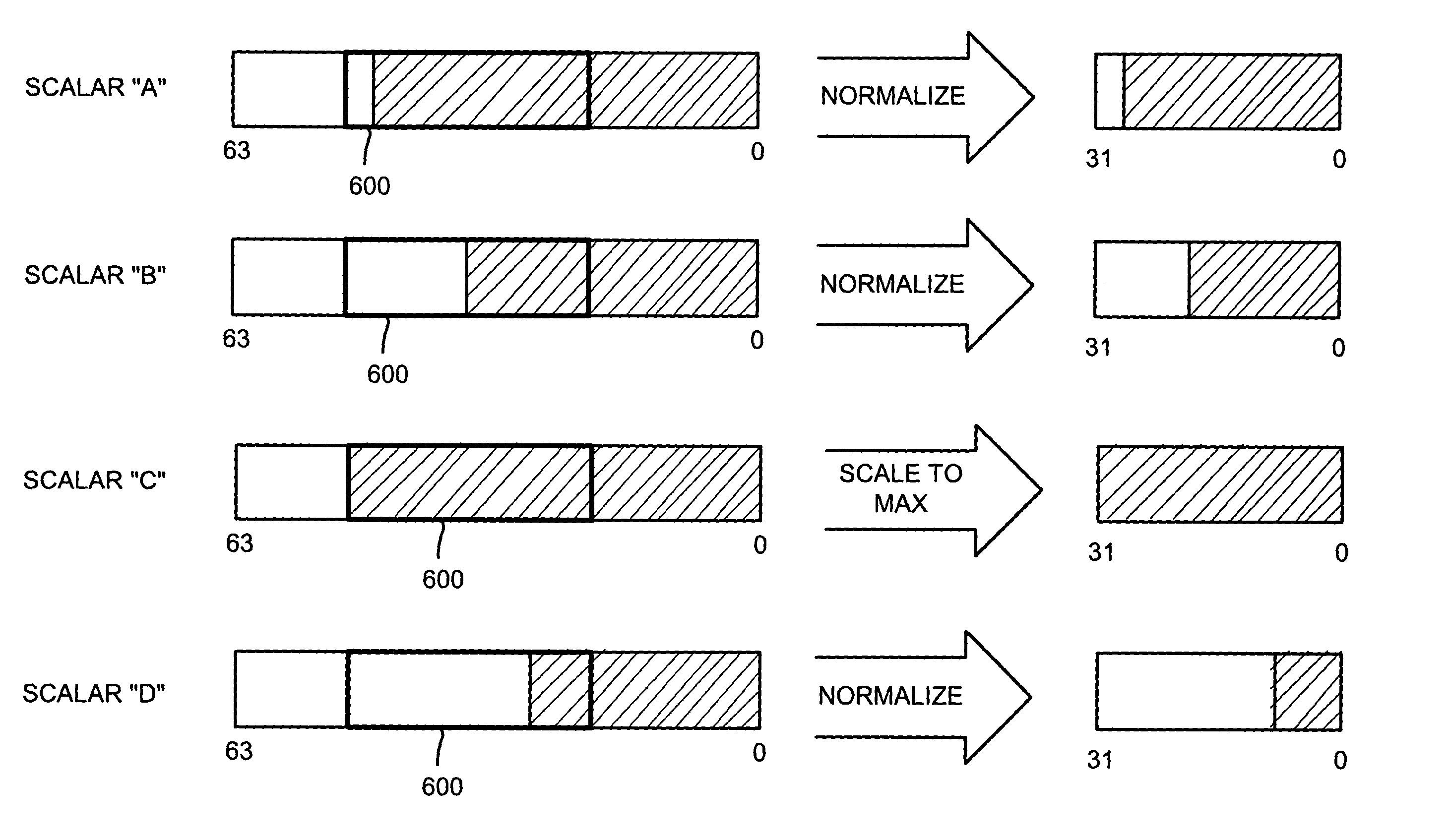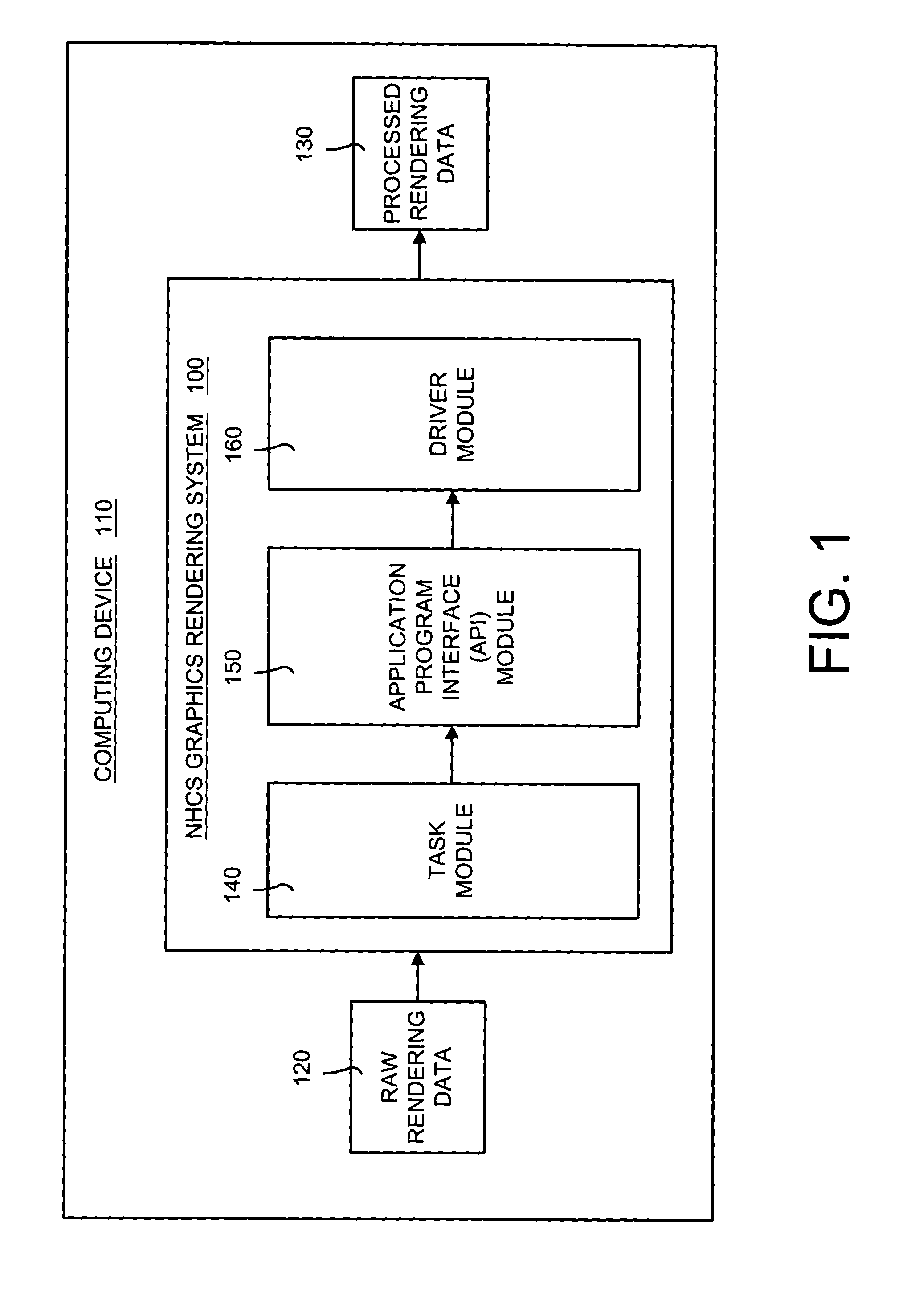Optimized fixed-point mathematical library and graphics functions for a software-implemented graphics rendering system and method using a normalized homogenous coordinate system
a fixed-point mathematical library and graphics function technology, applied in the field of graphics rendering, can solve the problems of not being able to move the rendering standards that work well on desktop systems directly to embedded platforms, the graphics technology in these embedded platforms generally does not enable a number of key 3d graphics technologies, and the power of the CPU may not be strong enough to support floating-point operations, etc., to achieve the effect of less memory, faster and more efficient, and less memory
- Summary
- Abstract
- Description
- Claims
- Application Information
AI Technical Summary
Benefits of technology
Problems solved by technology
Method used
Image
Examples
Embodiment Construction
[0025]In the following description of the invention, reference is made to the accompanying drawings, which form a part thereof, and in which is shown by way of illustration a specific example whereby the invention may be practiced. It is to be understood that other embodiments may be utilized and structural changes may be made without departing from the scope of the present invention.
I. General Overview
[0026]Embedded platforms (such as mobile computing devices) often have hardware that does not support intensive graphics rendering. In particular, a mobile computing device may have a central processing unit (CPU) with limited processing power and lack a coprocessor or graphics processing unit (GPU). This type of hardware that is found on most mobile computing devices typically will not support floating-point operations that are commonly used in graphics rendering. This severely limits the usefulness and desirability of mobile computing devices.
[0027]The NHCS graphics rendering system...
PUM
 Login to View More
Login to View More Abstract
Description
Claims
Application Information
 Login to View More
Login to View More - R&D
- Intellectual Property
- Life Sciences
- Materials
- Tech Scout
- Unparalleled Data Quality
- Higher Quality Content
- 60% Fewer Hallucinations
Browse by: Latest US Patents, China's latest patents, Technical Efficacy Thesaurus, Application Domain, Technology Topic, Popular Technical Reports.
© 2025 PatSnap. All rights reserved.Legal|Privacy policy|Modern Slavery Act Transparency Statement|Sitemap|About US| Contact US: help@patsnap.com



